HUNTINGsmart! USA Knowledge Base
Module 10 - WILDLIFE
DUCKS
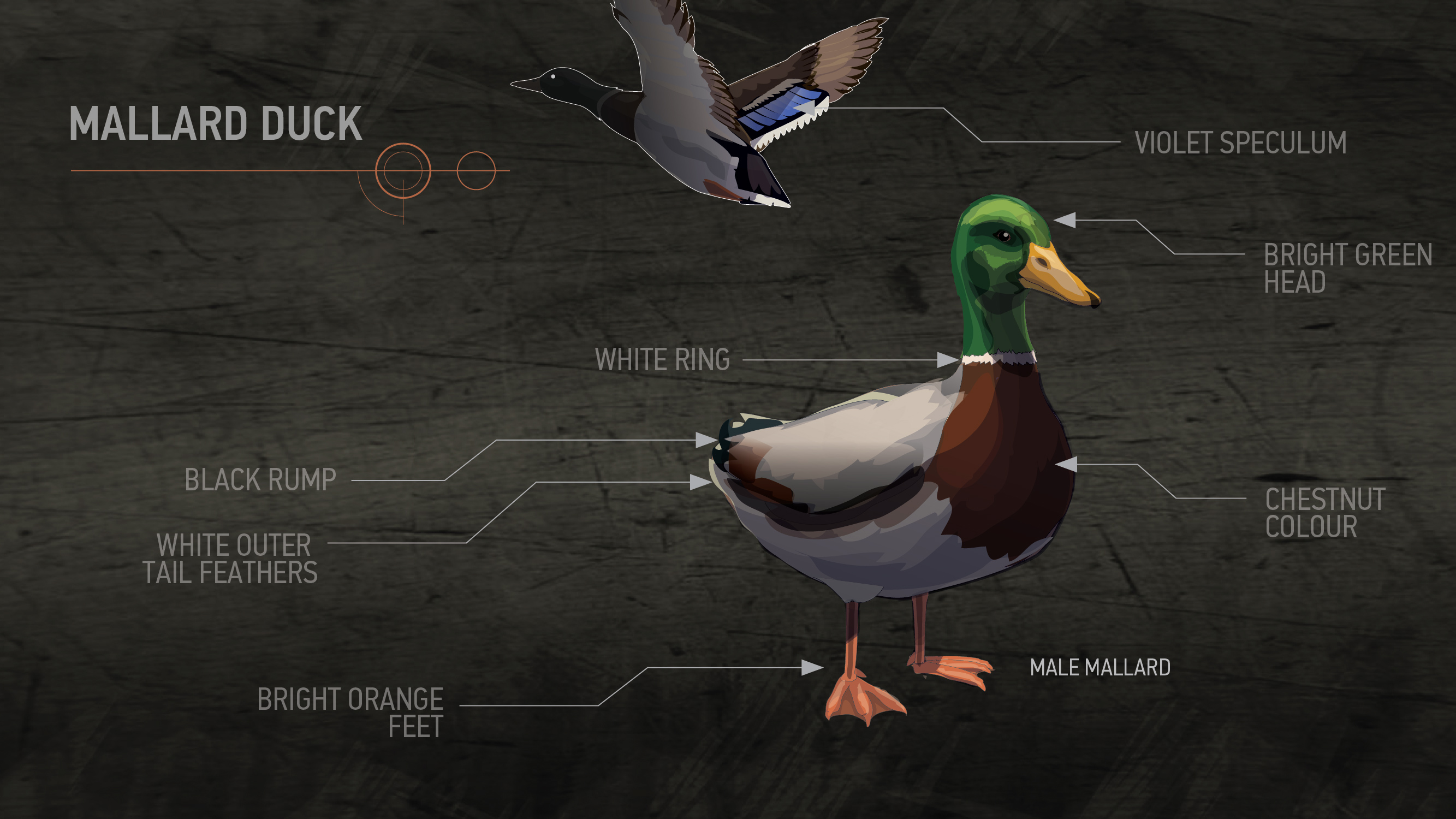
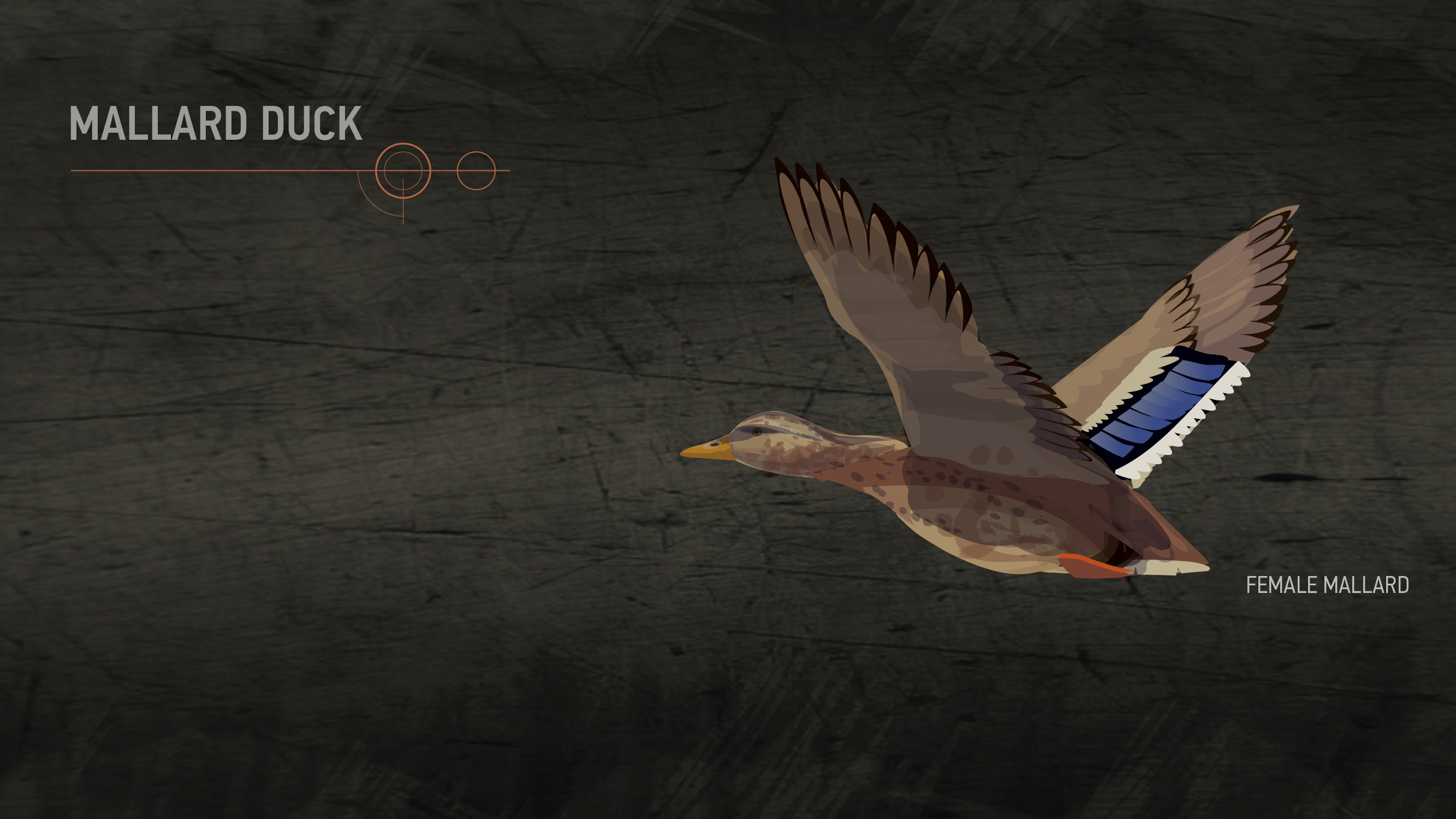
Identification
Easy to recognize - a Drake (also known as a ‘Greenhead’), is a male mallard duck. These guys will have a white ring around their neck, a chestnut colored chest, a bright green head, a violet colored speculum, greyish colored sides, a black rump, and white outer feathers on their tail.
Lady mallards, (the much more vocal of the two) are mainly brownish in color, but they have the same violet colored speculum as the males. You can also identify both male and female mallards by their muddy orange bills, and bright orange feet.
HABITAT & Migration Habits
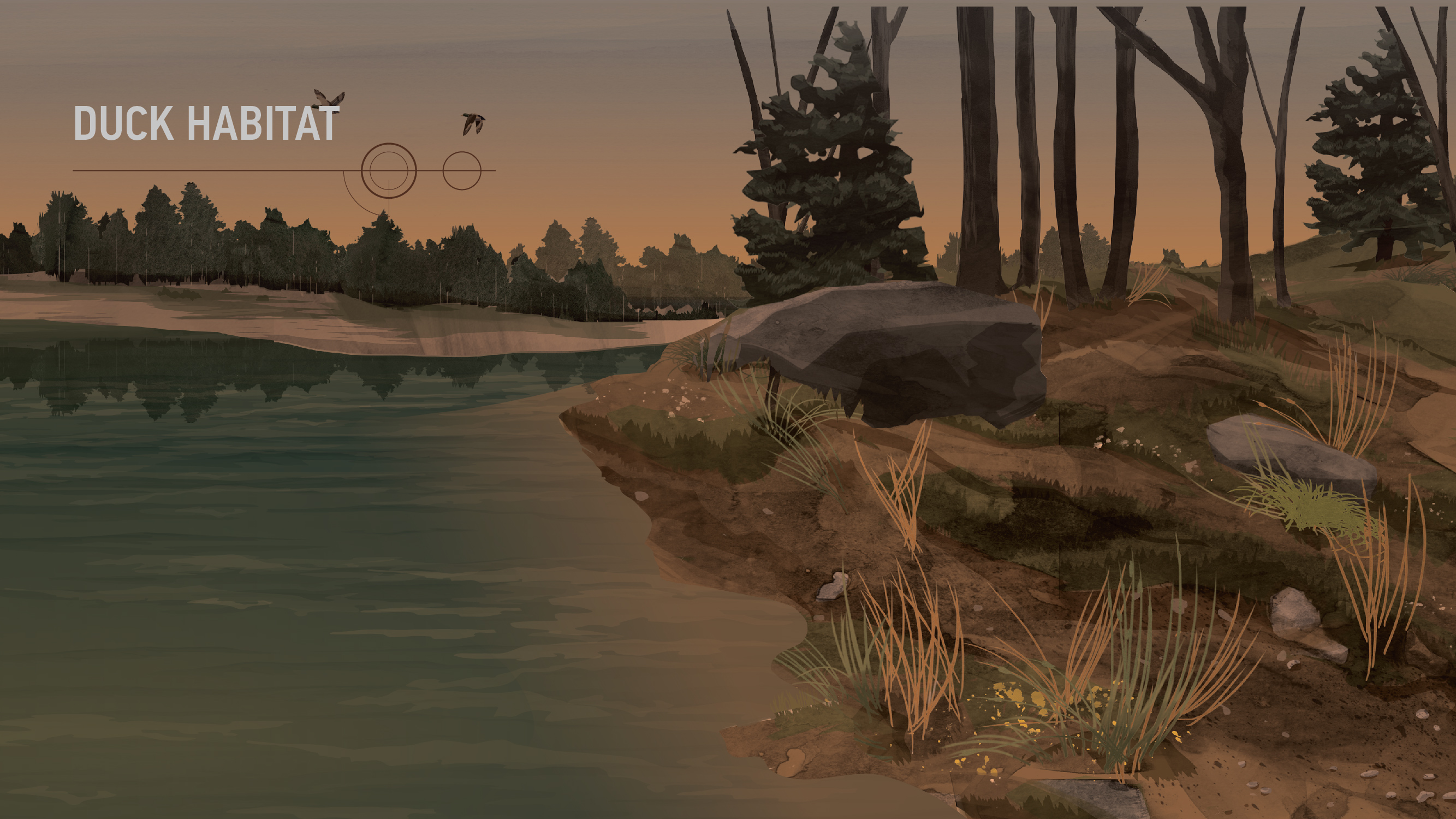
So how do you get them to land in your pond? There are a few things you should know. First of all, you have to be invisible from head to toe. Think of it this way, duck vision is 2 to 3 time better than human vision. This game bird flies across the continent every single year watching out for anything that looks off the entire time. You think a drake won’t notice if you forget to camouflage your face? Believe me; he’ll pick you off every time. Same advice goes for your camo – wear the right stuff or they’ll spot your set up from the sky.
A good line of decoys will also help to convince the ducks to fly your way. All of this is important, but what you really want to figure out is how to use your duck calls to bring them in
DUCK CALLS
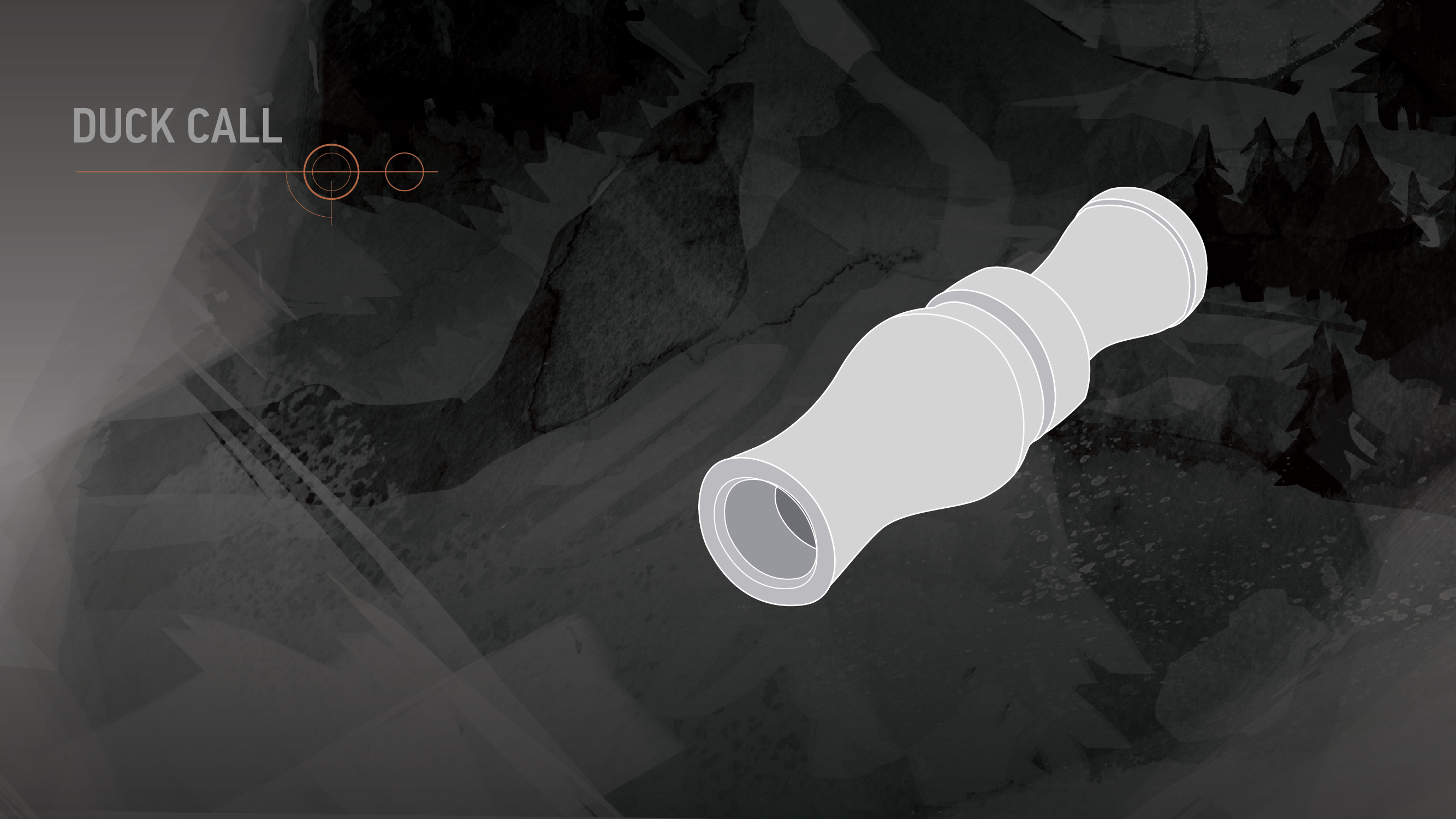
The ‘Basic Quack’:
It’s an easy one. You just say a number sounds or words into the call to create the ‘quack’ sound. Try it out and see what sounds or words work best for you. I prefer ‘hoot’, ‘quack’, ‘hut’, or ‘quit’. Any of these words will end up sounding like “quack”. Just make sure you fully articulate the word. Ducks know the difference between ‘qua’ and ‘quack’.
The ‘Greeting Call’:
This one will bring the ducks your way if they are flying off in the distance but within ear shot. For this one, you simply make 5 to 7 quacking sounds in quick succession. Keep a good rhythm- with the first quack being the loudest, and let the last ones dwindle off.
The ‘Lonesome Hen Call’.
This is a series of irregular, low pitched, nasally sounding quacks. Basically, you want to space the sounds out in the beginning, and then quicken them up in the end.
FIREARMS, Ammo & Your Target

Waterfowl hunting calls for a shotgun. Pump or Semi-Auto shotguns are the favorite because they don’t need to be reloaded as frequently as break action shotguns do. Pump action shotguns also give you the least recoil when you fire a shot. Some hunters consider this a great advantage.
You can duck hunt with a 10, 12, or 16 gauge. But a 12 gauge is the most versatile option for hunters, and will pack the punch you need to bring down the bird. For shot size, most water fowlers use number 4, 3, 2, 1, BB, BBB, and T. In terms of shotshell length, water fowlers usually use 3” or 3.5” loads with heavy shot charges.
VITAL ZONES
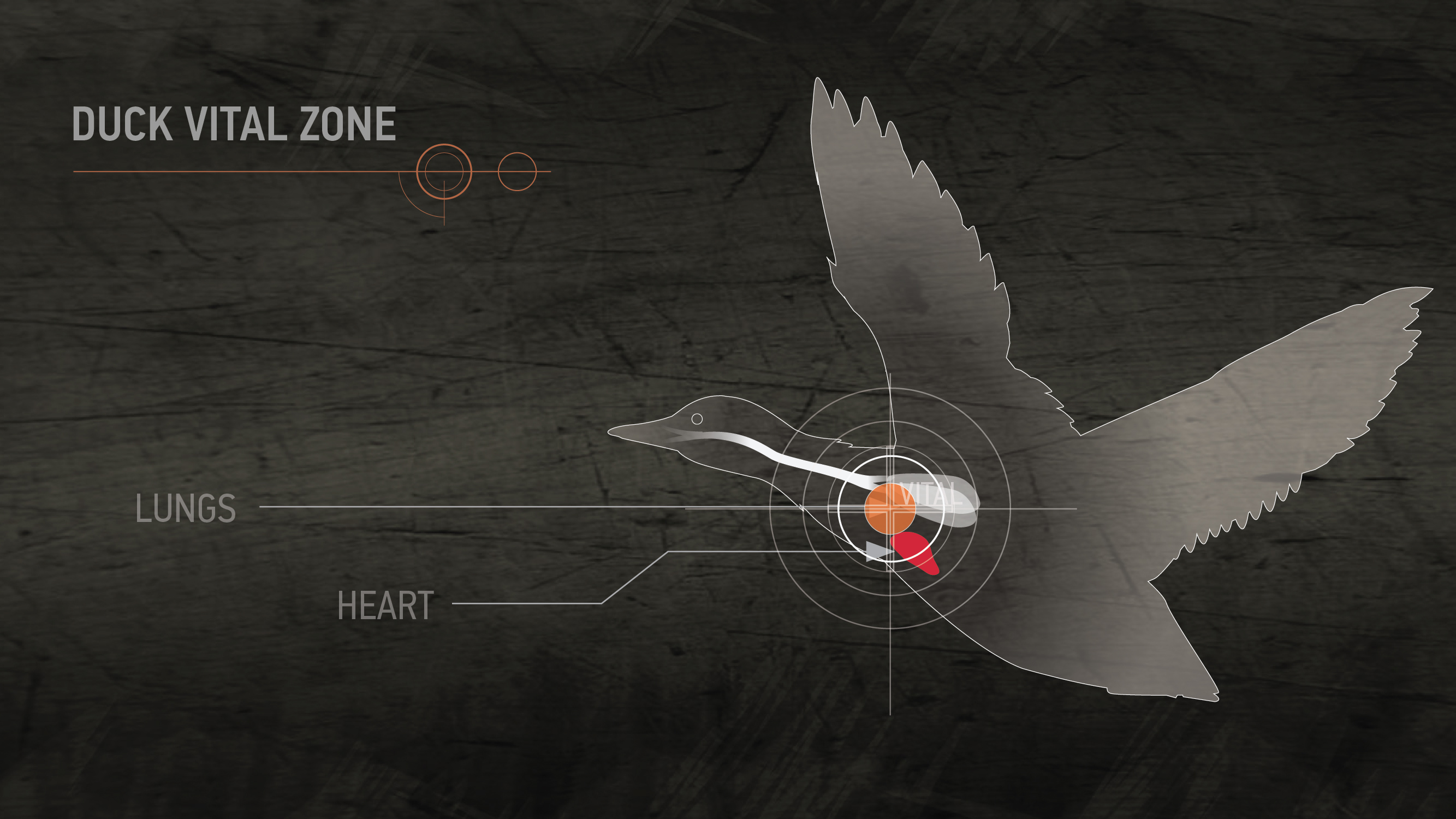
Duck hunters hit their game while they’re in flight. To do this, you’ll need to aim with your shotgun muzzle at the area just in front of the bird. An accurate shot will hit the ducks body where the line where their chest the white belly meet. Don’t aim for the duck’s head, it will be too small to hit with accuracy, and you’ll only injure a bird if you hit it’s body anywhere outside the vital zone area.



